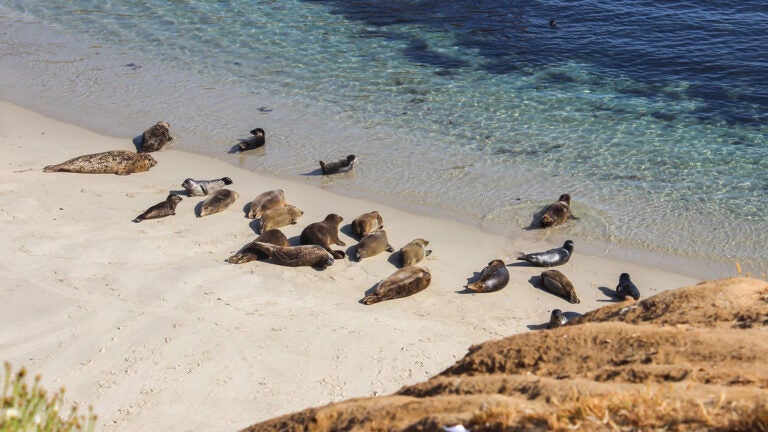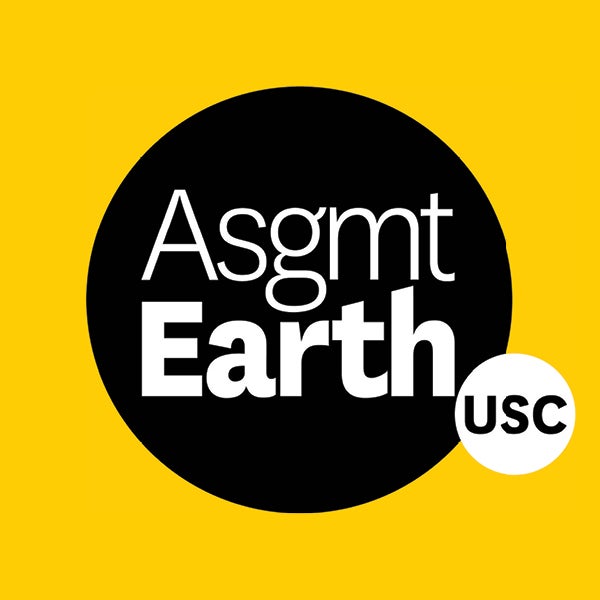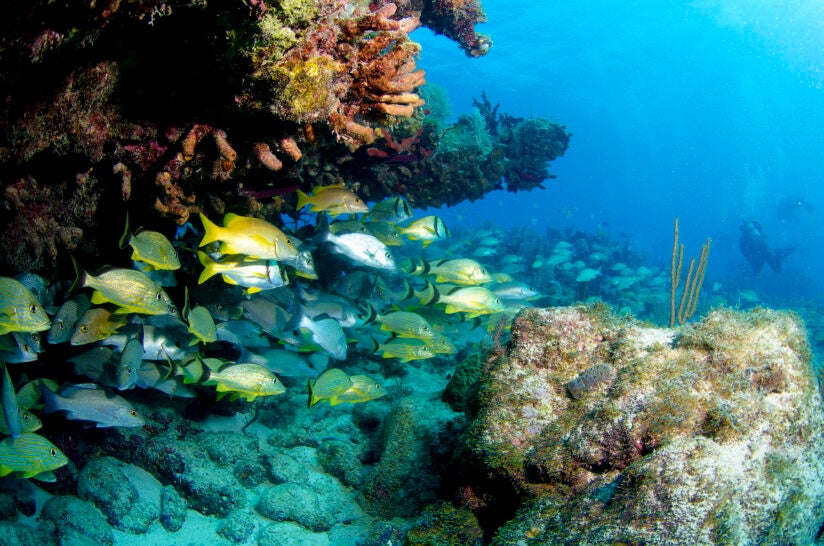
Toxic algae blooms are a recurring natural phenomenon in Southern California, but scientists are increasingly concerned over the frequency and severity of these outbreaks, which affect wildlife such as dolphins and sea lions. (Photo/iStock.)
Q&A: Toxic algae, warming waters imperil marine life on U.S. coasts
In Southern California, toxic algae blooms are killing hundreds of dolphins and sea lions while record-high ocean temperatures threaten Florida’s coral reefs. USC experts weigh in.
The images are heart-rending: hundreds of dolphins and sea lions washing up along the shores of Southern California, sick and dying from toxic algae poisoning. Photographed earlier this summer, they are the latest reminders that the climate crisis is becoming impossible to ignore.
 Toxic algae blooms, a recurring natural phenomenon, have long been observed in water off the coast of Southern California. But scientists are increasingly concerned over the frequency and severity of these deadly algal outbreaks. As climate change continues to warm ocean temperatures, these favorable conditions allow harmful algae to proliferate.
Toxic algae blooms, a recurring natural phenomenon, have long been observed in water off the coast of Southern California. But scientists are increasingly concerned over the frequency and severity of these deadly algal outbreaks. As climate change continues to warm ocean temperatures, these favorable conditions allow harmful algae to proliferate.
USC News spoke with David Caron, an expert in biological oceanography who is closely examining the ecological crisis and its potential impact on local marine ecosystems, and Carly Kenkel, at the USC Dornsife College of Letters, Arts and Sciences, who focuses on coral reefs.
Domoic acid, a neurotoxin emitted by a type of algae called Pseudo-nitzschia australis, is responsible for the deaths of hundreds of marine animals from Santa Barbara to San Diego. How do toxic algae blooms affect other marine species like fish, shellfish and seabirds?
Caron: Beyond marine mammals, sea birds that feed on small fish such as anchovies and sardines are at risk for significant intake of toxins if the planktivorous fish they prey on are consuming toxic algae. Most fish and shellfish appear to possess a reasonable tolerance for domoic acid (although some may be affected), but contaminated fish, particularly filter-feeding shellfish, pose a significant health risk to marine animals — and humans — that might consume them.
But not all algal blooms are harmful. Many are beneficial and support aquatic food webs. When those blooms are dominated by algal species that are noxious or toxic, however, they can result in very harmful effects on biota.
With rising ocean temperatures attributed to climate change, what changes have you observed in the timing and geographic distribution of toxic algae blooms?
Caron: There is growing evidence for shifts in the latitudinal distributions of toxic algae along the U.S. West Coast that appear to be driven by changes in temperature (i.e., a warming ocean). However, overall, temperature plays a secondary role to nutrients in explaining the occurrence of algal blooms in general and toxic blooms in particular. The availability of essential nutrients such as nitrogen, phosphorus and some trace nutrients such as iron is key to understanding the location, frequency and severity of coastal algal blooms, and that extends to toxic blooms in freshwater ecosystems as well.
Usually, when one talks about “bloom-forming nutrients,” the elements nitrogen and phosphorus are most discussed. Those two elements are needed in significant quantities for producing biomass, but generally, they are in the shortest supply for algae in many ecosystems. Thus, nitrogen and phosphorus tend to have a “controlling influence” on the magnitude of algal blooms.
There are natural sources of nutrients, generally arising from the decomposition of dead organic material, but also man-made sources. Sewage, agricultural and domestic animal facilities, and urban runoffs tend to have very high concentrations of these elements. In waters where man-made sources are significant relative to natural sources, they can lead to or augment algal blooms.

Why are coral reefs crucial for ecosystems worldwide?
Kenkel: Corals are the foundation of tropical reef ecosystems. Reefs are incredibly biodiverse — like rainforests of the sea. They are home to 25% of all marine species. But they also play several other roles. They act as a natural breakwater and can prevent erosion and waves and are a major source of income from tourism and livelihoods around the world through subsistence fishing.
Through your research, have you noticed any recent changes or patterns in coral reefs, or any other notable developments that can give us insights into the current state of these delicate ecosystems?
Kenkel: Right now, the Caribbean is experiencing an unprecedented heat wave. We’re seeing signs of major coral stress everywhere from Florida to Belize to the eastern tropical Pacific. The Florida Keys reef tract — the third largest barrier reef in the world — has not experienced temperatures this extreme in at least 40 years. The effects are particularly bad in the lower Florida Keys, where we do most of our research. Just this week, we had to mobilize to sample a long-term field transplant experiment early. The experiment was originally planned to run until next October, but the corals are unlikely to survive until then.
It’s fascinating how coral, an almost universally beloved symbol, resonates with people and inspires action. What is it about coral that makes it so effective in conveying the urgency of climate change?
Kenkel: I think it’s really the reef ecosystems that inspire. While the coral itself is beautiful, my sense is that it’s the diverse array of fish and other animals that inhabit the reefs that truly bring the system to life. I think it’s all that diversity, together, that brings joy and inspires action.
Climate change is a global problem, and we’re seeing these extreme heat events because of how much carbon dioxide is currently in our atmosphere. Every bit helps — taking public transit, buying locally, turning up your air conditioning just a few degrees, and, for those who can afford it, opting for clean-air or all-electric vehicles and installing solar panels and battery storage systems that will reduce your carbon footprint.



